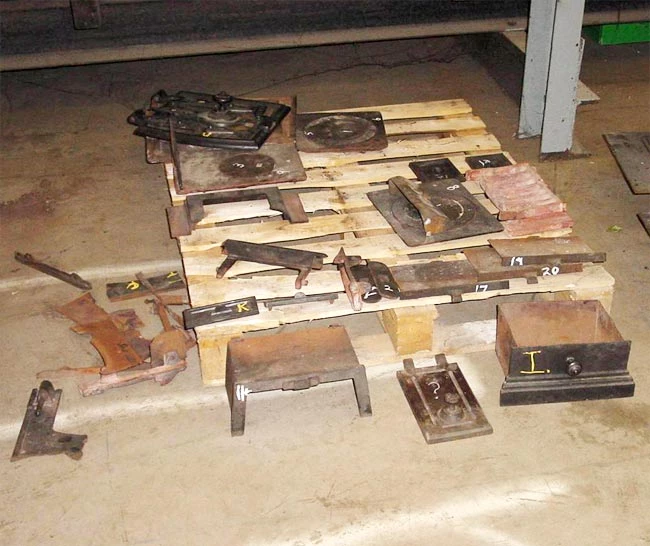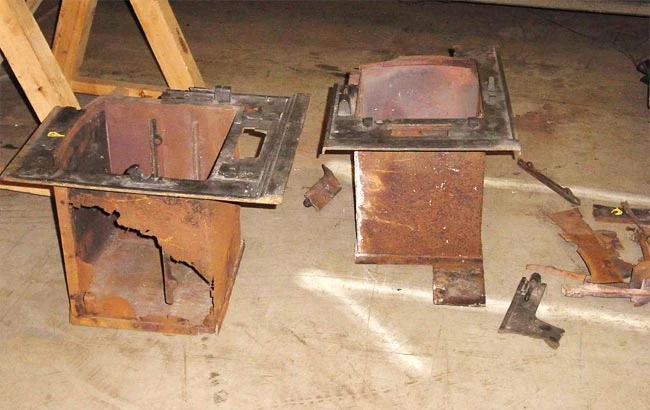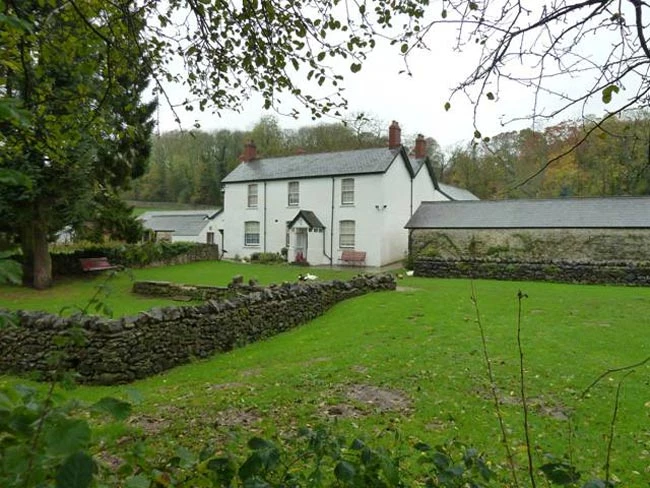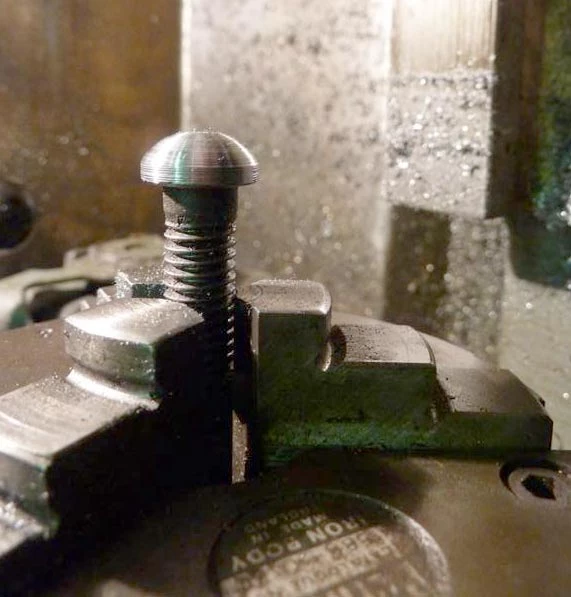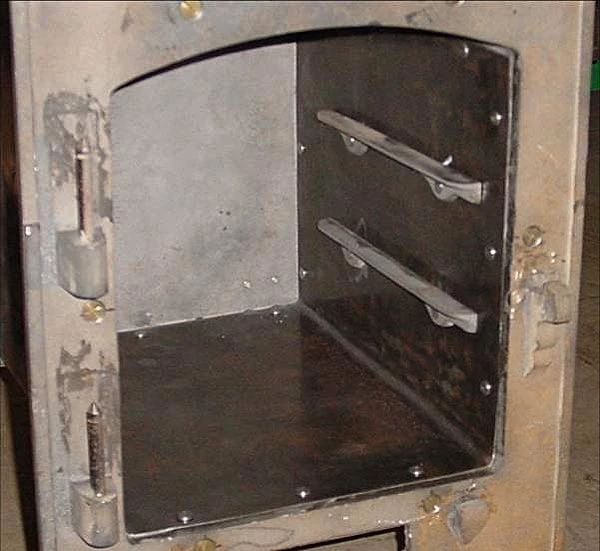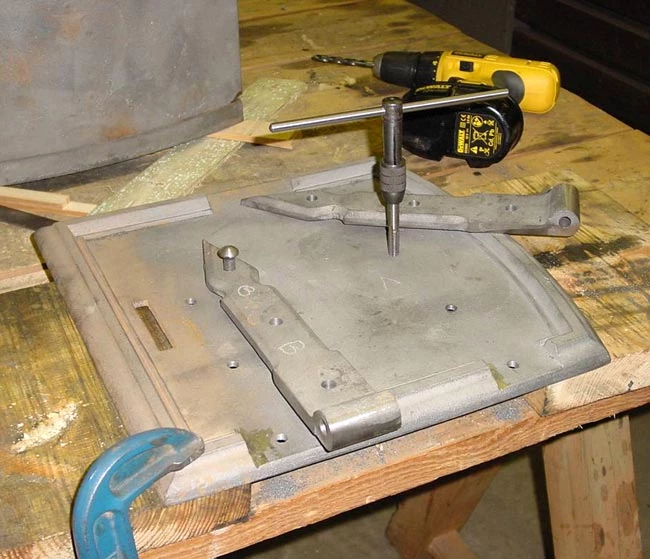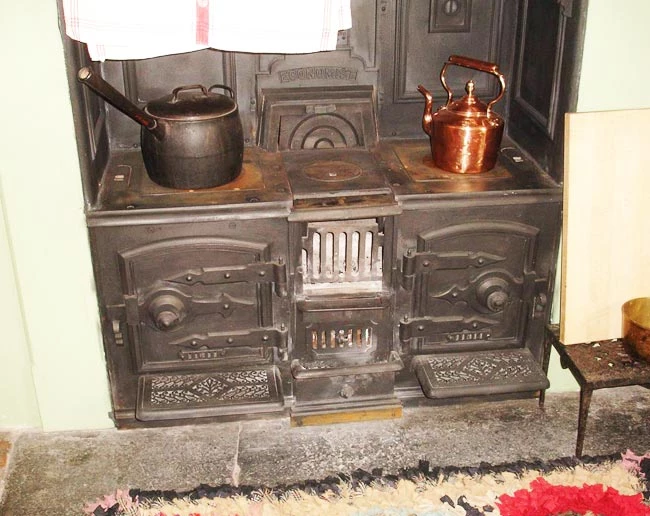Self Assembly of a Victorian Oven
, 1 July 2012
Working for Amgueddfa Cymru as part of the conservation team at the National Collections Centre, Nantgarw, certainly has its challenges. This was definitely the case when we received a request from the Historic Buildings Unit based at St Fagans - National History Museum to help assemble an oven. I assumed this would probably involve a few screws and washers, and just a few hours’ work.
I remember the lorry arriving at Nantgarw with two large pallets on board. One contained burnt, broken and whole pieces of mainly cast iron components from the old oven; the second pallet held the components of the new oven. Even at first glance, there appeared to be far more pieces of the newly cast material. With the help of photographs taken of the old oven before dismantling all the parts were laid out, matching old with new; it took me three days!
The oven had been removed from Llwyn-yr-Eos farmhouse at St Fagans which dates from about 1820. The building had been closed to the public for conservation work to be carried out; this provided an opportunity to replace the late Victorian oven, which was definitely the worse for wear.
After identification came assembly. I decided to start by making two new mild steel inner walls. This was done with the help of Len Howells, the fabricator at Big Pit - National Coal Museum. These would then act as a framework to which I would attach the new oven parts.
The old oven components were fastened together using rivets, large and small, both dome and flat head, and machine screws. As the new oven was made of new cast iron, which is very brittle, I was naturally very apprehensive about using a hammer to carry out any riveting, especially as some of the pieces were only a few millimetres thick. I also took into consideration the fact that they were very costly to produce! I decided to address this problem by manufacturing artificial rivets. This was done by using the lathe to machine the heads of bolts. I ground the cutting tool to the exact shape of the dome required. The flat head rivet was cut using a normal cutting tool.
The bolts now had threads, but with rivet heads. The pieces that needed riveting would be held together by having a clearance hole drilled into the top plate and a tapping hole drilled into the piece to be fastened to it. When a thread needs to be cut in a hole a tool called a tap is used; this process is referred to as “tapping a hole”.
Every component of the new oven came without holes for the relevant fastenings, so measurements of every hole had to be taken from the old pieces, some of which were broken, and transferred to the new. Once this had been done, the dummy rivets were screwed into the tapped holes, the parts were tightened together and the excess thread then cut off.
Turning to the machine screws, I managed to source sufficient examples with slotted countersunk heads and a Whitworth thread. The Whitworth thread was created by Joseph Whitworth in 1841 after standardising a number of contemporary threads and was known as the British Standard Whitworth thread, BSW for short; it was only superseded by the metric thread in the early 1970s. Modern-day machine screws would have been incongruous to the oven, with their hexagonal head slots and metric thread.
Using these fastenings, the new oven was methodically assembled and fully constructed in the workshop at Nantgarw. It was then taken apart and secured onto a pallet, which the Historic Buildings unit then collected. It is now back in place in the farmhouse and has already baked a few loaves!
So a task which I thought might mean a few hours’ work involved the building of an oven comprising 94 separate parts, the drilling and tapping of 132 holes and machining of 88 bolts to look like rivet heads eventually took me five weeks…..so much for a few hours work!!
Phil Tuck, Conservation Officer, Dept. of Industry, Nantgarw.
